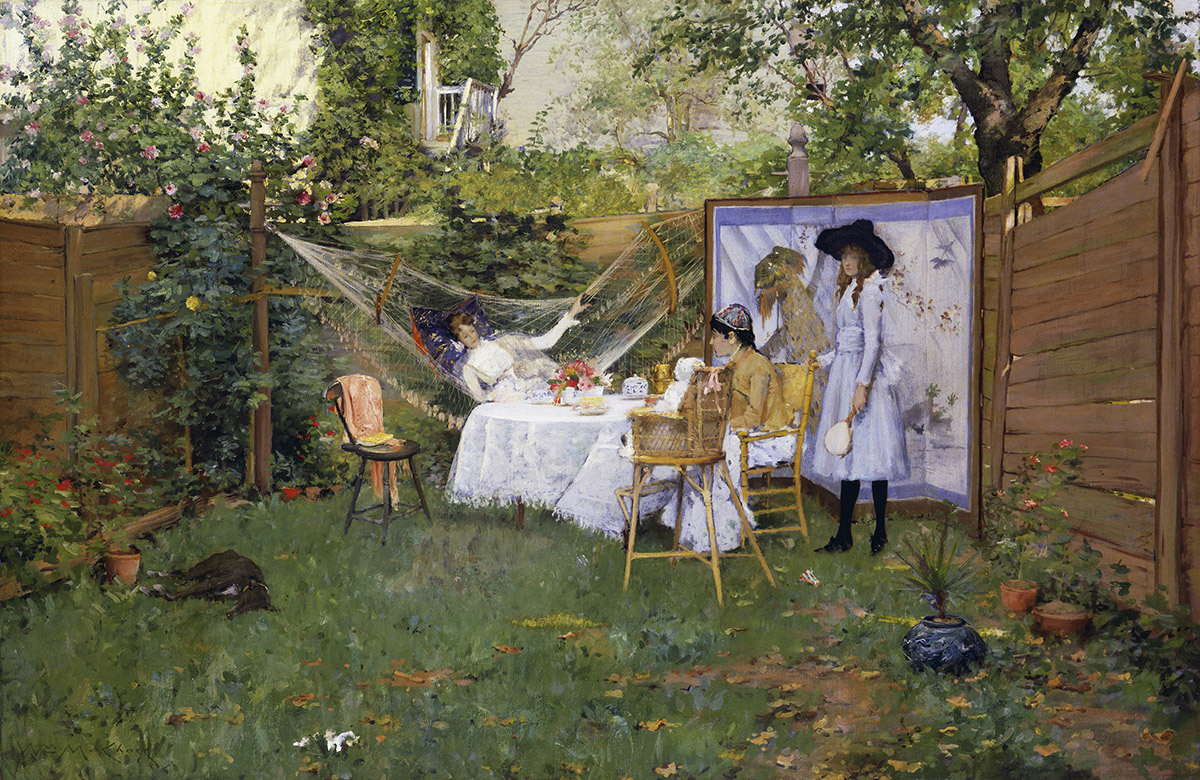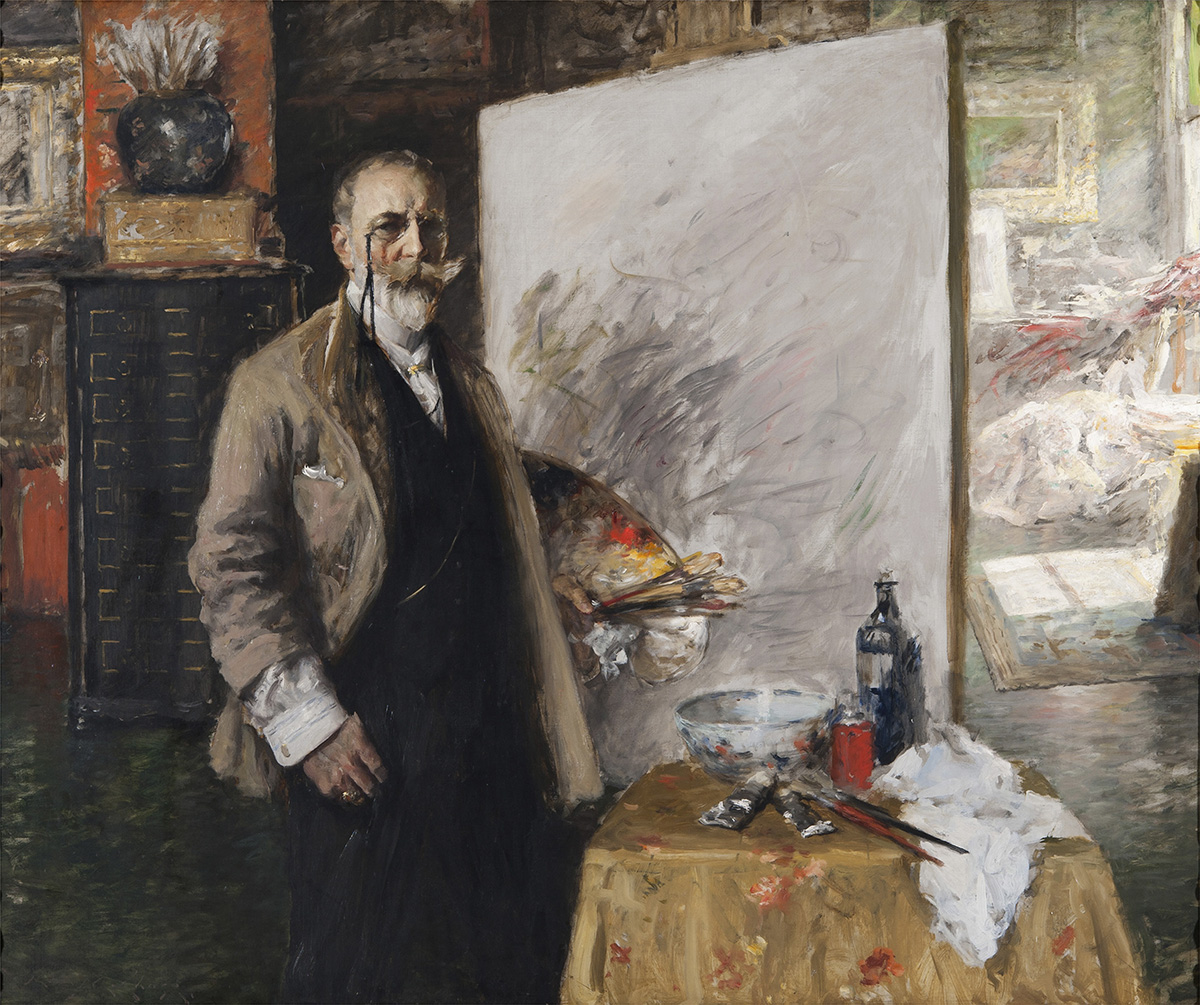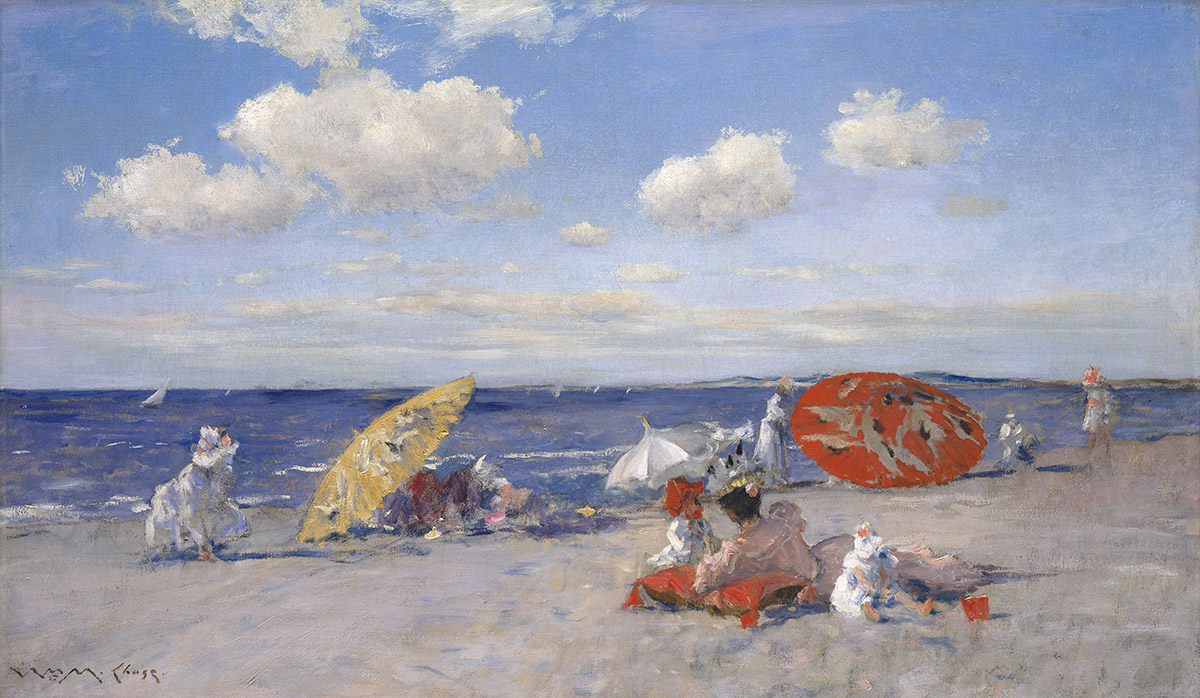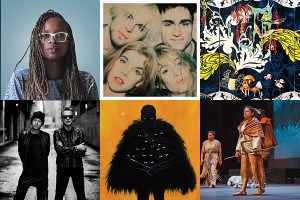William Merritt Chase Retrospective Opens at the Museum of Fine Arts

The Open Air Breakfast by William Merritt Chase, 1888. Courtesy of the MFA.
You may have heard of Charles Sheeler, Georgia O’Keeffe, Marsden Hartley, and Edward Hopper, but what you might not know is that all of them were, in a way, classmates. They, along with other leading American modernists, shared a teacher—William Merritt Chase.
Often overshadowed by his contemporaries (such as John Singer Sargent and James McNeill Whistler, for instance), Chase was a pioneer who left enormous, enduring ripples in the fabric of American art history as a revered Impressionist painter, a leader in reviving pastels in the 19th century, and a devoted teacher.
In the centenary of his death, the Museum of Fine Arts presents “William Merritt Chase,” the first retrospective in over three decades, opening October 9. Approximately 80 of Chase’s works will be on view at the Ann and Graham Gund Gallery. The exhibition is a homecoming of sorts (Chase’s first solo exhibition in 1886 was in Boston), but also one that is long overdue (Boston hasn’t had another since). As the MFA’s senior curator Erica Hirshler puts it, “I think it’s time.”

Self‑Portrait in the 4th Avenue Studio by William Merritt Chase, 1915-16. Courtesy of the MFA.
“What’s so exciting about Chase is that he was very fluid in moving back and forth across subject and style,” explains Elsa Smithgall, a curator from The Phillips Collection. The exhibition is organized thematically, with the layout a testament to Chase’s expansive experimentation in subject: Galleries range from “Art in the Open Air” (landscapes) and “Life in the Studio” (interiors) to “Posing and Composing” (portraits) and “Chase and Japonisme” (incorporation of Japanese influences).
“It was interesting to think about the eclectic nature of Chase’s art,” recalls Hirshler. She draws a comparison to 19th century architecture, which fused modern and old-fashioned influences: “Houses that are very modern, very old-fashioned, we take bits of churches, bits of English cathedrals and we mix it all together.” Chase operated similarly. “That kind of picking and choosing is very much of Chase’s aesthetic. It’s hard to make a single story out of that,” Hirshler says. “I’ve emphasized it by doing this show thematically so that you do run from different spaces that seem like a very different artist at work.”
Chase’s mastery in both oil and pastel is also emphasized with the two mediums interspersed throughout the exhibition, so that it is somewhat difficult to differentiate one medium from the other. This itself is indicative of Chase’s virtuoso. According to Hirshler, Chase described himself as “a sponge,” absorbing different styles from old masters whose techniques he admired, such as Anthony van Dyck, Frans Hals, Diego Valezquez and Rembrandt.
Katherine Bourguignon, a curator at the Terra Foundation for American Art, calls Chase “a painter’s painter.”
“Some of these works are amazing in terms of the technicality, the expertise,” she says. “While it’s 19th century and today’s artists are doing so many different things, I think any artist would be really able to recognize the skill involved.”

At the Seaside by William Merritt Chase, 1892. Courtesy of the MFA.
As successful as he was a painter, Chase was an equally dedicated teacher. He taught regularly at Shinnecock Summer School of Art on Long Island and founded Chase School of Art in 1896, known today as Parsons School of Design. “The best thing I think that can be said about a great teacher is that he or she inspires their students to find their own voices,” notes Hirshler. “I think when you realize the greatest American modernists of the 20th century were all students of Chase, it’s very telling.”
Bourguignon agrees. “It’s rare to find someone who’s so famous as an artist at the time—he’s winning awards, he’s selling his works, but he keeps teaching,” she says. “Chase loved it. It kept him young, it kept him engaged with the next generation. He was always encouraging, he supported his students, he purchased works of art, he gave works of art.”
Chase himself chose to pursue art education in Munich instead of Paris, an atypical move for aspiring artists of his time. “He went to Munich, not to Paris,” says Bourguignon. “We’re in Boston, not New York. I think there’s something about that that would be appealing to audiences here.”
To illustrate the extent of his influence, the MFA has placed stickers under every painting created by an artist who studied under Chase in the Art of the Americas wing. “He just hasn’t had the attention that some of his artistic compatriots have had,” says Hirshler. “I can only hope that this show will change that.”
October 9-January 16, Museum of Fine Arts, 465 Huntington Ave., mfa.org.

